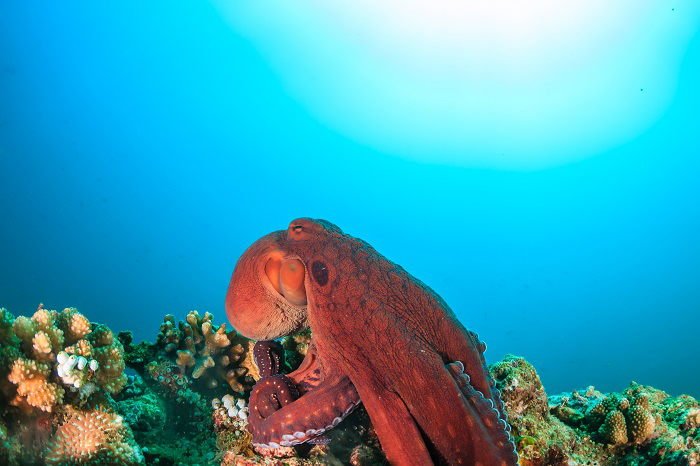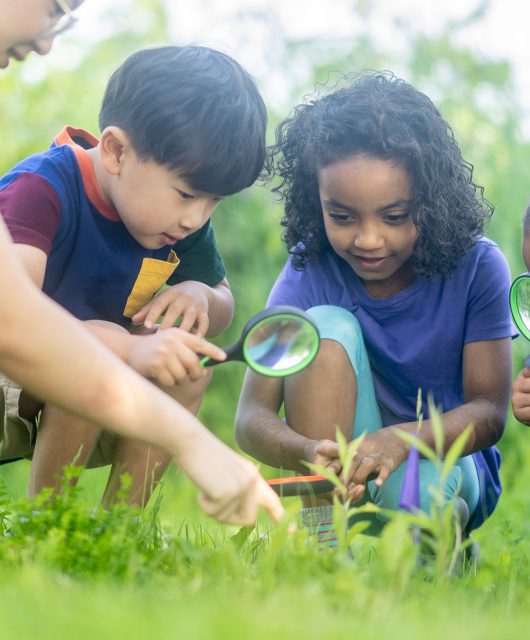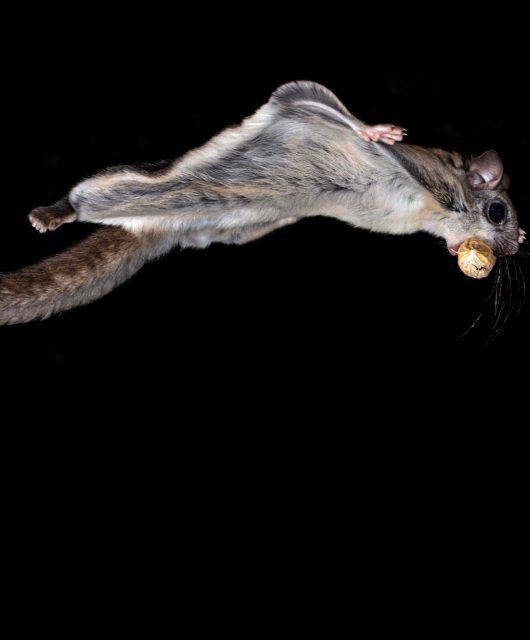In August of 2019, the Hinterland Who’s Who team left for wonderful British Columbia.
Our goal was to film our latest videos on the Sea Otter and the Giant Pacific Octopus, two iconic animals of our West Coast waters.
We headed to off-shore of Vancouver Island, near the town of Ucluelet. After an hour or so of sailing, we finally saw them! Two wild Sea Otters frolicking and feeding in a kelp forest, their favourite habitat.
Sea Otters

Sea Otters are the largest of the Mustelids, which means they’re related to Wolverines, River Otters, Martens and Minks.
They are also a species at risk.
Even if their number was brought up after becoming extinct in Canada, they’re still rare.
They forage for clams, mussels, chitons, snails, prawns, crabs, abalone, sea urchins, squid and sea stars in coastal waters of the Pacific Ocean. We even saw the two otters break sea urchins on their stomachs. These animals carry their favourite rock in a pocket under their arms, and they use it to crack open their prey if needed. It was pretty cool to see!
When they’re not feeding, otters like to float at the surface with others, often grooming themselves. This keeps their fur warm, as they push air bubbles at the roots of the hair. We saw this behaviour when we used close-ups of the rescued otters at the Vancouver Aquarium to fill in gaps from filming the wild animals.
Even if it’s easy to forget because of their cuteness, Sea Otters are a keystone species for their habitat. This means that they are necessary for the ecosystem to function well. They do that by eating seaweed munching creatures, letting the long kelp grow into dense forests which break ocean currents and provide habitat to countless other sea animals, such as the other species we filmed: the Northern Giant Pacific Octopus.
Northern Giant Pacific Octopus

While this octopus is not at risk, it’s actually even more tricky to film then the otter. It tends to be nocturnal, walking with its arms on the ocean floor to find prey only at night. It hunts shrimp, crabs, scallop, abalone, cockles, snails, clams, fish and other octopuses using its awesome senses of smell and sight, its eight arms and thousands of suction cups. During the day between feedings — and when it isn’t mating — the Northern Giant Pacific Octopus stays in its underwater den, which is often under a boulder or in a crevasse.
The Northern Giant Pacific Octopus is also a master of camouflage. It uses a complex system of pigment cells (chromatophores), muscles and nerves to change colour in one-tenth of a second to match the colour and texture of its surroundings. As it has no bones, octopuses also have an amazing ability to squeeze into tiny places, as long as those places are large enough for the octopus’s beak to pass through.
With all of these adaptions, octopuses are really hard to find and film in the wild! But we found a solution by filming Ceph Rogan, the Vancouver Aquarium octopus. This photogenic animal showed us all of her striking features.
To complete our footage of these fascinating animals, we filmed our two hosts telling us about them in the lovely Vancouver Island seascapes. This is how we make the Hinterland Who’s Who videos you’ve been familiar with for years! And this year, we’re off to film other species in the fall… Stay tuned in 2021 to check them out!





2 comments
Great stuff but sad to see that the octopus photo here is NOT a giant pacific octopus. If you look at the reef it sits on you will see it is a tropical reef, not a pacific Northwest reef. It looks like a stock photo incorrectly named
Oh dear! Thanks for the heads up on that one! We’ll take another look.